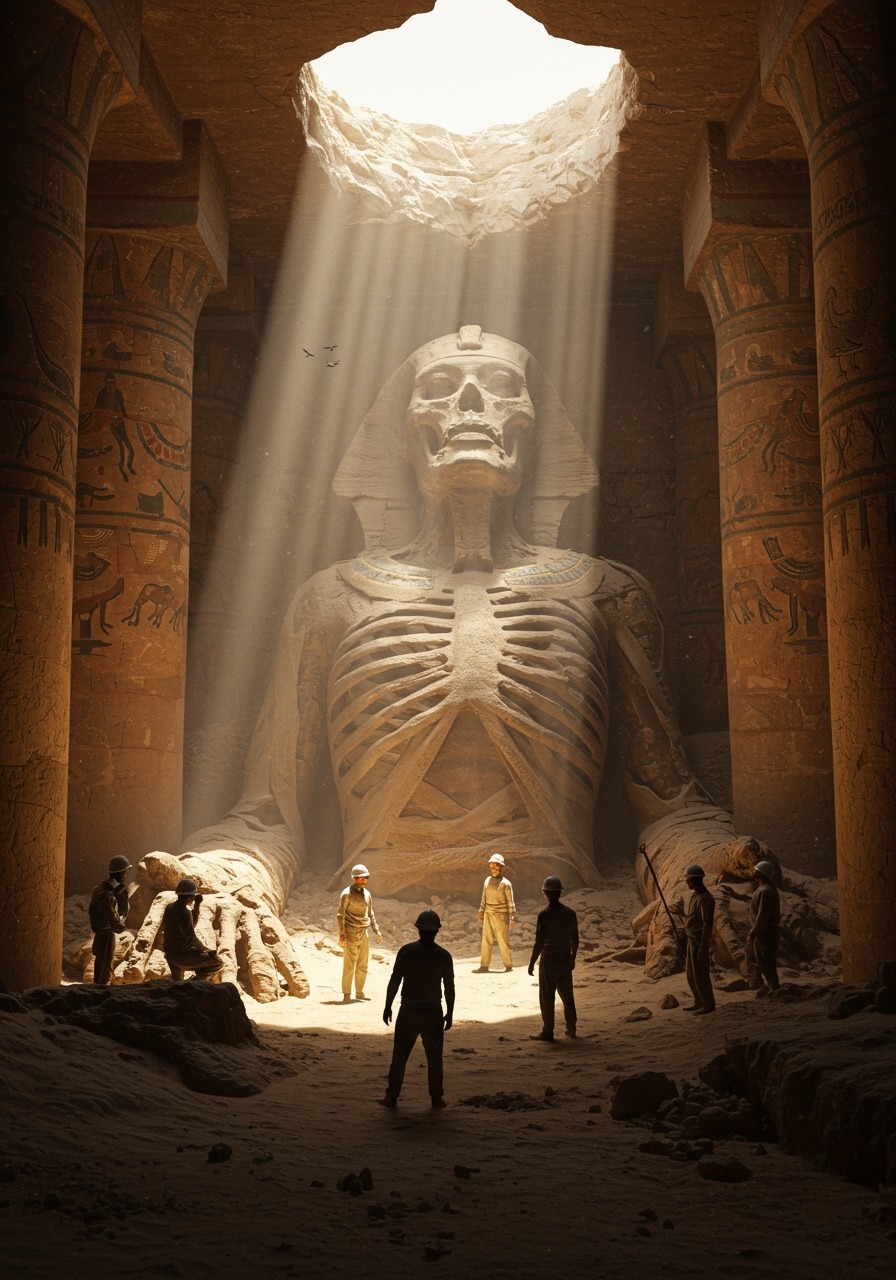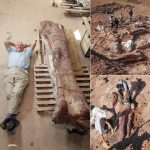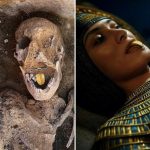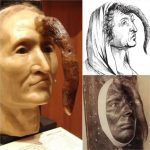Giant Pharaoh Unearthed in Lost Egyptian Temple: Myth or Reality?

In a discovery that has stunned archaeologists and historians alike, a long-forgotten Egyptian temple has revealed skeletal remains of a colossal “Pharaoh,” far surpassing the size of any previously documented rulers. This extraordinary find, unearthed beneath layers of sand and debris, challenges our understanding of ancient Egyptian history, royal lineage, and the myths surrounding giants and divine rulers. The excavation is now at the forefront of global attention, merging science, legend, and the enduring mysteries of Egypt.
The Discovery

The skeletal remains were uncovered during a systematic dig in a temple complex lost to history. Archaeologists report that the skeleton exhibits towering proportions, with long bones and reinforced structural features unlike any known human remains from the period. The scale alone suggests a figure of immense physical stature, giving new weight to ancient Egyptian legends of giants and divine rulers.
Artifacts accompanying the skeleton—including ceremonial jewelry, amulets, and intricately carved relics—hint at the high status of the individual. Hieroglyphics and temple carvings near the burial site suggest that the figure may have been venerated as a semi-divine being, blending religious, political, and possibly mythological significance.
Historical and Mythological Implications
Ancient Egyptian texts often describe Pharaohs as larger-than-life figures, sometimes attributing godlike qualities to their rulers. This find raises the possibility that myths of giants or divine kings were inspired by extraordinary individuals whose physical stature set them apart from the rest of the population.
The discovery could transform our understanding of royal succession, ceremonial practices, and societal hierarchies in Egypt’s past. If verified, the Giant Pharaoh might represent a unique class of rulers, revered not only for leadership but for an imposing presence that reinforced authority and divine legitimacy.

Archaeological Significance
The site’s preservation is remarkable, with skeletal remains largely intact despite centuries beneath the desert sands. Analysis of bone density, skeletal structure, and accompanying artifacts is underway, aiming to determine age, health, and potential causes of death. Carbon dating and DNA studies will also provide critical insights into lineage and the broader population context of the era.
Archaeologists emphasize the importance of this find for understanding both historical and cultural dimensions. Beyond physical size, the tomb’s layout, grave goods, and inscriptions shed light on ancient Egyptian religious beliefs, funerary rituals, and the symbolic significance of pharaonic authority.
Global Fascination
The revelation of a Giant Pharaoh resonates worldwide, captivating scholars, enthusiasts, and the public alike. The intersection of myth, legend, and tangible archaeological evidence ignites debates about the accuracy of historical texts, the role of mythology in recording reality, and the mysteries that ancient civilizations may have concealed.
Conclusion
The unearthing of a Giant Pharaoh in a lost Egyptian temple represents one of the most extraordinary archaeological discoveries of modern times. Towering skeletal remains, ceremonial artifacts, and temple inscriptions combine to challenge established narratives of ancient Egypt. As scientists and historians continue to study this remarkable find, the world watches in awe, wondering if myths of giants and divine rulers were more than legend—and whether this discovery will forever alter our perception of pharaonic history.











